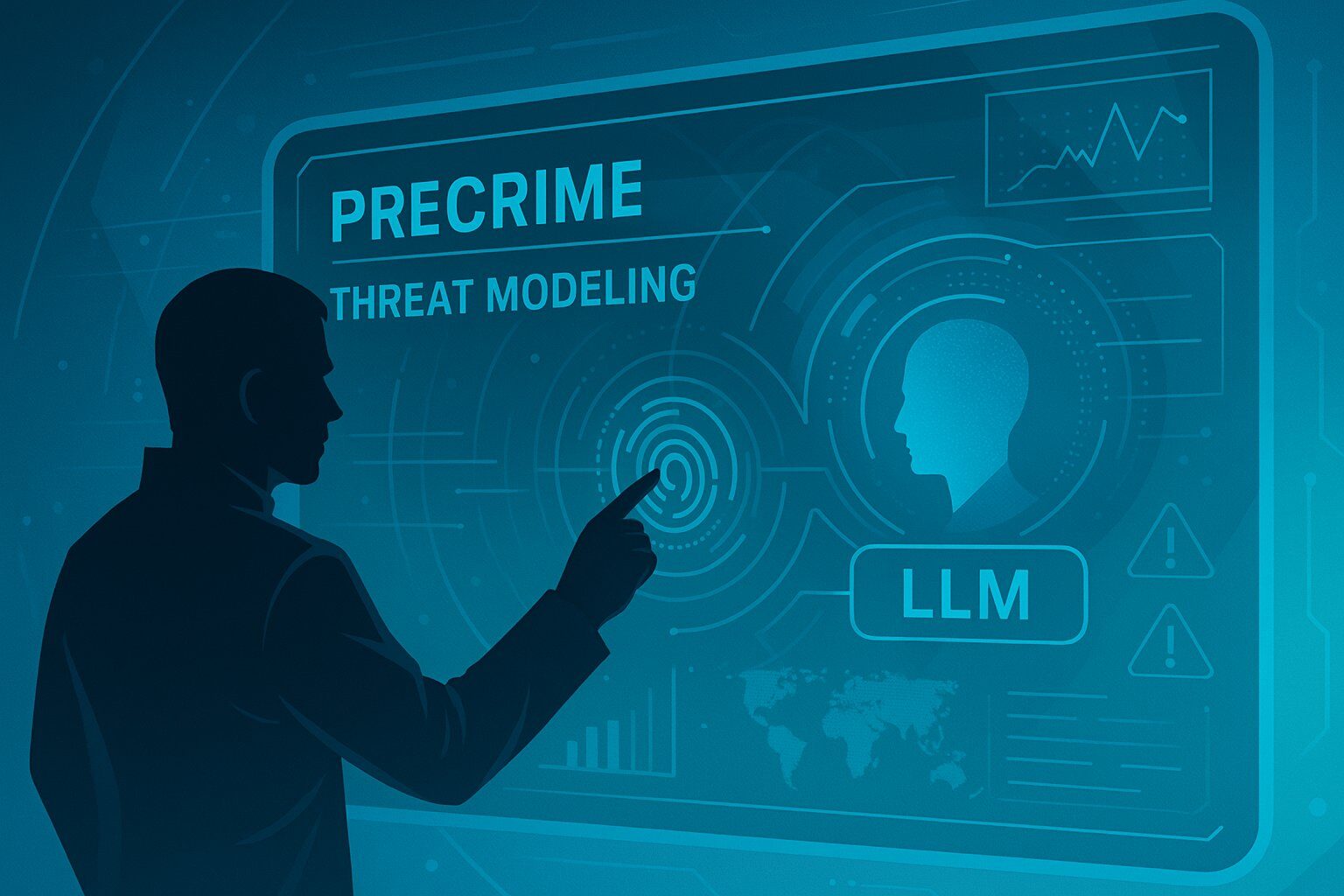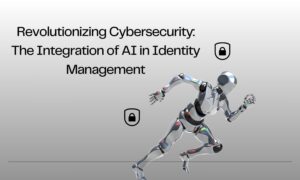From Sci-Fi to Cyber Strategy: How Generative AI Is Reimagining Threat Modeling
Let’s kick things off with a bit of cinematic inspiration. Remember Minority Report, the sleek, futuristic thriller where a special “Precrime” unit uses predictive technology to stop crimes before they happen? Now, picture swapping Tom Cruise for a cybersecurity analyst, and replacing the precogs with large language models, or LLMs. That is the world we are beginning to see with modern threat modeling.
In cybersecurity, threat modeling is our version of precrime. It is the proactive process of anticipating and neutralizing threats before any real damage occurs. Just like the analysts in the movie who visualize future crimes, today’s security professionals map out systems, identify potential vulnerabilities, and assess which attack paths are the most likely. The goal is not to predict everything, but to prioritize intelligently so defenses can be built where they matter most.
Now comes Generative AI. With the rapid advancement of LLMs, we are no longer relying only on human expertise to interpret complex architecture or threat scenarios. These AI systems can analyze system design, simulate attacker behavior, flag risky configurations, and suggest mitigations with a speed and scale that humans alone cannot match. Imagine a smart assistant that reviews your infrastructure and alerts you that a module is exposing sensitive data through an outdated API. That is no longer a futuristic concept. It is already happening.
LLMs are transforming the meaning of shifting left in security. They allow teams to incorporate threat modeling directly into the design process, even before the first line of production code is written. For organizations working toward DevSecOps maturity, this approach is not just a benefit. It is essential. It brings Engineering, Security, and QA teams into true alignment from the start.
If you are still viewing threat modeling as just another compliance checkbox, it is time to rethink your strategy. With Generative AI as an ally, security is no longer just a reactive measure. It becomes an integral, intelligent part of building modern, resilient systems.
Mr. Arun Kumar Elengovan: Driving the Future of Cybersecurity with AI Powered Resilience
Arun Kumar Elengovan is a leading voice in enterprise security and software resilience, bringing over 15 years of handson and strategic experience to the forefront of cybersecurity innovation. A Senior Member of IEEE and a Distinguished Fellow of the Soft Computing Research Society, Arun combines deep technical expertise with visionary leadership to help organizations design secure, scalable, and future ready systems.
Throughout his career, Arun has worked at the intersection of engineering and executive strategy, consistently advocating for proactive and systems driven approaches to cyber defense. He is widely recognized for advancing the integration of Generative AI and large language models into threat modeling, enabling security teams to move beyond traditional methods.
As a regular keynote speaker at top international technology forums, Arun shares forward looking insights on how to embed trust into digital innovation. His work is shaping how organizations build secure architectures that are aligned with the speed and complexity of the modern digital landscape.
A Modern Approach to LLM Powered Threat Modeling: A Strategic Guide
Build Context Aware Intelligence Tailored to Your Organization
Effective threat modeling with large language models (LLMs) begins with deep contextual awareness. Rather than relying on generic inputs, successful implementations draw from a curated knowledge base grounded in an organization’s actual environment. This is where Retrieval Augmented Generation (RAG) becomes essential. By incorporating internal artifacts such as legacy threat models, known vulnerabilities, architecture diagrams, source code, and engineering documentation, RAG enables LLMs to operate as domain aware security analysts.
The result? Risk insights that are directly aligned with your unique architecture, technology stack, and business workflows, insights that are not just theoretically sound but immediately actionable.
Refine Precision Through Prompt Engineering
Prompt engineering is the discipline of communicating effectively with LLMs. It’s not merely about posing questions rather it’s about shaping inputs to elicit focused, valuable outputs. Leveraging frameworks such as COSTAR (Context, Objective, Style, Tone, Audience, Response), teams can consistently generate prompts that extract high value intelligence.
Whether identifying attack vectors or analyzing complex architectural diagrams, precise prompts form the bridge between human intuition and machine inference.
Leverage Multimodal LLMs for Visual Threat Analysis
Modern LLMs now extend beyond text; they interpret visuals too. With multimodal capabilities, they can parse images such as architecture diagrams, sequence flows, and network topologies.
This unlocks new dimensions of analysis: identifying design flaws, highlighting missing components, and uncovering anomalous patterns in system flows. For optimal results, ensure the input visuals are high quality and well labeled. Poor image fidelity can skew interpretation, so clarity and structure are essential.
Design Tools That Ask the Right Questions
An advanced LLM system doesn’t just respond to prompts rather it engages users by asking smart, clarifying questions. These inquiries help uncover contextual gaps that might otherwise remain hidden: details about APIs, protocols, user roles, or data boundaries.
To avoid overwhelming users, the number of questions per session should be capped, and the system should proceed with caution if key information is missing thereby flagging any areas of potential uncertainty as risks.
Maintain Human Oversight Over Final Outputs
While LLMs can significantly accelerate threat modeling, human judgment remains irreplaceable. These models can get you 80% of the way by flagging potential threats and suggesting mitigations but the remaining 20% demands validation, prioritization, and refinement by experienced security professionals.
When discrepancies or gaps emerge, close the loop: revise prompts, enrich the knowledge base, and adjust the questioning strategy. As Arun Kumar Elengovan aptly states, “Garbage in, garbage out.” The quality of input data directly shapes the intelligence you receive.
Grounding Your Strategy in Proven Threat Modeling Frameworks
To ensure consistency, clarity, and repeatability, anchor your AI augmented threat modeling in established frameworks. Here are some of the most impactful methodologies:
- STRIDE – A Microsoft originated model that identifies design time threats across categories like Spoofing and Tampering.
- PASTA – A seven stage attacker centric framework aligning technical risk with business impact.
- LINDDUN – A privacy focused model spotlighting linkability, identifiability, and regulatory concerns.
- OCTAVE – Emphasizes enterprise risk and asset driven threat modeling.
- VAST – Tailored for Agile and DevOps, scaling across infrastructure and application layers.
- Trike – A policy driven model focusing on mapping threats to control systems.
- DREAD – A lightweight scoring framework for quick risk prioritization.
- Attack Trees – Visual diagrams outlining attacker paths through complex systems.
- hTMM – A hybrid approach blending STRIDE, privacy models, and visual analysis.
- Kill Chain Based Modeling – Uses real world attack flows (e.g., MITRE ATT&CK, Lockheed Martin Kill Chain) for detection focused environments.
The Future of Threat Modeling is Human + Machine
In a landscape where systems evolve rapidly and attack surfaces expand by the day, augmenting threat modeling with LLM powered tools is no longer optional; it’s inevitable. As Mr. Arun Kumar Elengovan emphasizes, the traditional manual process must be accelerated through intelligent automation. But the linchpin of success remains the same: context.
A truly effective system understands the nuances of your architecture, the subtleties of past incidents, and the strategic goals of your organization. Combine this with structured methodology and disciplined input refinement, and you create not just a faster process but a smarter, more resilient one.
At its core, threat modeling is about alignment: bringing the right people together, clarifying intent, uncovering hidden risks, and identifying how to mitigate them—before they materialize. When integrated early, collaboratively, and with the right AI guardrails, security becomes not just a protective layer, but a proactive competitive advantage.
Thank you for reading and for investing your time in building a safer, more resilient future.
The views and opinions expressed in this article are the author’s own and do not necessarily reflect those of any affiliated organizations or institutions.



































